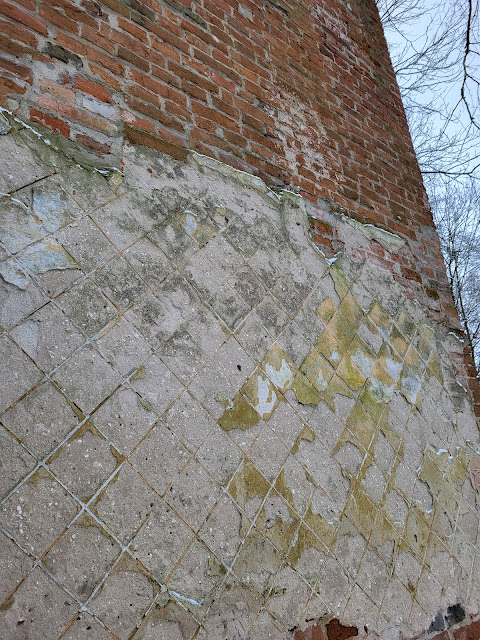
Kamienica przy ul. Waliców 14 została zaprojektowana przez Wacława Heppena i Józefa Napoleona Czerwińskiego. W 1913 roku była już oddana do użytku. W 1928 roku policja aresztowała komunistkę Manię Szulman tu zamieszkałą, gdy malowała antypaństwowe hasła na murze.
W czasie okupacji niemieckiej, po powstaniu getta w 1940 r. dom leżał po stronie getta warszawskiego. W tej kamienicy mieszkał m.in. Władysław Szlengel – poeta warszawskiego getta. Kamienica została wyłączona z getta i włączona do „aryjskiej” części miasta wraz z całym małym gettem w sierpniu 1942, w trakcie wielkie akcji deportacyjnej do Treblinki.
Kamienica była jednym z głównych punktów polskiej obrony w czasie powstania warszawskiego. Ślepa ściany kamienicy stanowiła barykadę. W czasie walk Niemcom udało się podpalić budynek.
24 września 1944 r. niemiecka piechota wsparta dwoma czołgami atakowała stanowiska na ul. Waliców. Atak poprzedzany był „goliatem”, którego wybuch zburzył front kamienicy. Budynek pełnił funkcje mieszkalne do roku 2004, aktualnie wpisany w rejestr zabytków.
Tenement house at ul. Waliców 14 was designed by Wacław Heppen and Józef Napoleon Czerwiński. In 1913, it was already put into use. In 1928, the police arrested Mania Szulman, a communist who lived here, when she was painting anti-state slogans on the wall.
During the German occupation, after the ghetto uprising in 1940, the house was on the side of the Warsaw ghetto. In this tenement house lived m.in. Władysław Szlengel – poet of the Warsaw Ghetto. The tenement house was excluded from the ghetto and incorporated into the "Aryan" part of the city along with the entire small ghetto in August 1942, during the great deportation action to Treblinka.
The tenement house was one of the main points of Polish defense during the Warsaw Uprising. The blind wall of the tenement house was a barricade. During the fighting, the Germans managed to set the building on fire.
On September 24, 1944, German infantry supported by two tanks attacked positions on ul. Waliców. The attack was preceded by a "goliath", the explosion of which destroyed the front of the tenement house. The building served residential functions until 2004, currently entered in the register of monuments.
Mietshaus in der ul. Waliców 14 wurde von Wacław Heppen und Józef Napoleon Czerwiński entworfen. 1913 wurde es bereits in Betrieb genommen. 1928 verhaftete die Polizei Mania Szulman, eine Kommunistin, die hier lebte, als sie staatsfeindliche Parolen an die Wand malte.
Während der deutschen Besatzung, nach dem Ghettoaufstand 1940, befand sich das Haus auf der Seite des Warschauer Ghettos. In diesem Mietshaus wohnte m.in. Władysław Szlengel – Dichter des Warschauer Ghettos. Das Mietshaus wurde im August 1942 während der großen Deportationsaktion nach Treblinka aus dem Ghetto ausgeschlossen und zusammen mit dem gesamten kleinen Ghetto dem „arischen“ Stadtteil eingegliedert.
Das Mietshaus war einer der Hauptpunkte der polnischen Verteidigung während des Warschauer Aufstands. Die blinde Wand des Mietshauses war eine Barrikade. Während der Kämpfe gelang es den Deutschen, das Gebäude in Brand zu setzen.
Am 24. September 1944 griff deutsche Infanterie, unterstützt von zwei Panzern, Stellungen an der ul. Walicow. Dem Angriff ging ein „Goliath“ voraus, dessen Explosion die Front des Mietshauses zerstörte. Das Gebäude diente bis 2004 Wohnzwecken, aktuell im Denkmalregister eingetragen.









































